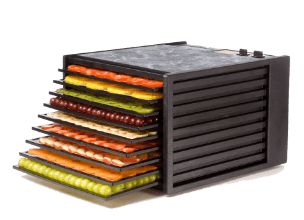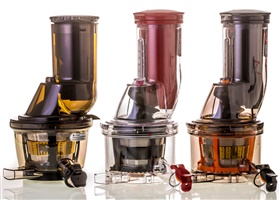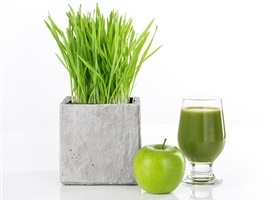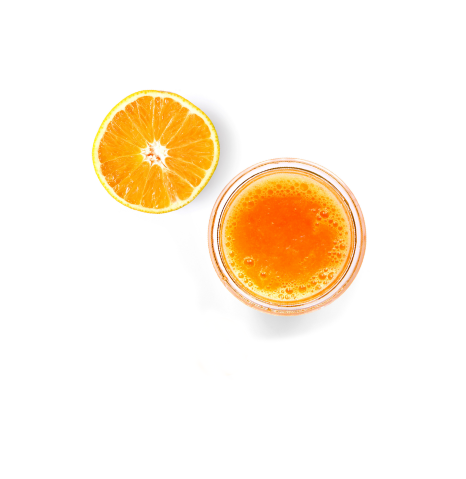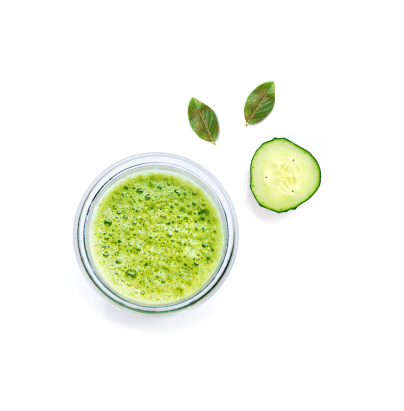What is the Best Juicer?
So which is the best juicer? There is one simple answer: it’s the one that best meets your expectations and juicing needs…but that doesn’t narrow it down much unless we look at several priorities that people have when choosing. There are several points to consider and it helps to prioritise according to what you definitely need, what you would like, and what is less important. By filtering your choice according to the ‘must have’ features you are more likely to get the juicer that is best for you, because there is no single machine out there that is simply the best for everything. As we drill down into some detail below, there are a few useful links that may help narrow down your selection and you are always welcome to call us on the number at the top of the page for expert personalised advice. At the end of the article we offer links to some ‘best in category’ choices that get our vote.
Best Value Juicer
For fast and convenient access to juicing the most common fruits and vegetables, the Nutri Juicer Cold is the best value model in our range. This model has been awarded the accolade of ‘Best Buy Juicer’ in the Independents ‘Ten Best Juicers’ guide… three times.
Best For Leafy Greens & Wheatgrass
Horizontal Single Auger Juicers are probably the best choice if you need a juicer that is particularly good for leafy greens and wheatgrass and they do a very good job with most other ingredients too. But for almost the same performance a Vertical Slow Juicer will be a bit easier to live with and will actually take a bit less time to use and clean overall. Twin Gear Juicers are also excellent for these ingredients but they are generally for the real juice enthusiast who doesn’t mind spending more time overall.
Best For Hard Fruits & Vegetables
Centrifugal Juicers offer the most convenient juicing experience for these ingredients. All the examples in our fruit and vegetable juicers section perform just as well as these two types but they are not quite as fast, so if you want to juice predominantly hard fleshed ingredients the centrifugals are the quickest, with Vertical Slow Juicers being almost as quick to use and clean.
Best For Soft Fruits
Slow Juicers have revolutionised juicing soft fruits and berries – it used to be quite wasteful with earlier juicer types but slow juicers give a much better juice yield with soft fruit. They are also great for all other ingredients, including leafy greens and wheatgrass. However, berries are easy to incorporate into smoothies and just to eat, so juicing berries is not usually a priority for most people.
Best For Nutritional Therapy
Most Nutritional Therapists will recommend a Twin Gear Juicer – they are a little more complicated to drive but they are believed to extract more nutrients than any other type. They take a bit longer to use and clean, but if you are motivated to get the best nutrient extraction you probably won’t find spending a little longer doing your juicing to be that much of a deterrent.
Best All Rounder (for all ingredients)
Again, Vertical Slow Juicers win hands down for versatility because they juice all of the above mentioned ingredients well while remaining convenient and user friendly. This is the type preferred by all the staff at UK Juicers for use at their homes – enough said?
Working Out Your Juicing Priorities
This might seem fairly obvious for most people but surprisingly one persons best juicer could be someone else’s juicing nightmare that spends most of it’s life stuck in a cupboard after purchase. Here are a few aspects of juicer choices to help point you in the right direction.
Juice Yield
When you first think about it, the quantity of juice you get from your ingredients seems a simple enough criteria, until you realise that this very much depends on the type of ingredients you are juicing. You may choose a juicer that gives a very respectable yield on the most common juicing ingredients only to discover that later when you want to juice more leafy greens for example, you’ve ended up with the wrong choice. For general juicing ingredients, which include most firmer fleshed fruits and vegetables, there’s not much difference across the range, say a maximum 5-10% variation in most cases, but with trickier ingredients the differences can grow. As a rule of thumb, remember that centrifugal juicers don’t perform as well as other types on soft fruits, leafy greens and wheatgrass, although they are the quickest and most convenient to use and clean. Also if you want to juice a lot of fruits, we probably wouldn’t recommend going for a Twin Gear Juicer as the process with these ingredients is a bit too slow for most people.
Ease of Use
Some juicer types do take a little more getting used to than others but this is not a huge challenge. Centrifugals are the most popular format and these are pretty intuitive and easy to assemble and use. Most don’t require further adjustments once they are assembled but some masticating juicers do offer a range of pulp pressure adjustments. This means you can set the force used to press the juice, so for example fibrous ingredients might require a high pulp pressure while soft berries need less. This isn’t really that difficult to figure out but it is one extra thing to do if you prefer a ‘set it and forget it’ approach.
In terms of ease of use, starting with the easiest, the pecking order is Centrifugal Juicers (plus the rather unique Champion Juicer), followed closely by Vertical Slow Juicers, then Horizontal Single Auger Juicers and finally the most complicated are Twin Gear Juicers. If you are a motivated juice enthusiast, then even the Twin Gear Juicers shouldn’t present much of a problem if you are happy to trade a little time for a little extra nutrition.
A recent innovation in our favourite vertical slow juicers category is the concept of batch juicing. Batch juicers have a large hopper on top instead of a simple feed chute. You fill the hopper with all your juice recipe and it auto feeds all by itself. In terms of ease of use this ‘hands free’ juicing idea has really taken off and the Nama J2 Juicer has quickly become our favourite juicer of all time. Read more about batch juicing here.
Ease Of Cleaning
This is one of the most common factors that people are concerned about. Most of our juicers have dishwasher safe parts and at first glance that seems like a huge plus. However, in any juicer the filter screen that separates the juice from the pulp is unlikely to come properly clean in a dishwasher. Number of parts to clean and how fiddly they are also plays into this, especially if you don’t have a dishwasher. Slow juicers with ‘juice valves’ allow you to do most of the clean up before you disassemble them, by running them with some water sealed in the juicing parts at the end of a juicing session. These would get our vote for easy cleaning, followed by centrifugal juicers. (Centrifugal juicers generally have fewer parts but the larger screens with more holes can take a bit longer to clean). Next it’s horizontal single auger juicers, because some of the angular parts are a bit fiddly to clean and after these the least easy to clean are twin gear models. Sadly we have no self-cleaning juicers but even with the twin gear models it shouldn’t take longer than a few minutes for clean up, so don’t be disheartened.
Price
Budget is a pretty obvious consideration for many people and all our juicer pages can be sorted according to price. We don’t sell ‘cheap’ juicers because time and again we have found the old adage ‘buy cheap and buy twice’ to be true. We’ve tested a lot of fruit and vegetable juicers over the years and we’ve almost always found the cheaper models wanting, often with very poor juice yields. Long term value for money is something we very much believe in and all our juicers have been rigorously tested and are supported by good warranties (and our legendary customer service!) should anything ever go wrong.
Footprint
If you are really short on worktop space you might not want one of the larger horizontal format juicers as some of them will hog too much of your kitchen real estate. If they are within your budget, vertical format slow juicers take up the least counter space and they are also our most versatile juicers. After slow juicers, centrifugal models have a bit bigger footprint, followed by all the horizontal format juicers.
Weight
Some of our more powerful induction motored juicers can weigh a good few kilos. That’s no problem if the juicer stays out on the counter ready for use and we do encourage this. But if you need to lift it in and out of a cupboard frequently, the weight of the juicer and whether it has easy lifting points or handles may be a consideration, particularly for some elderly or disabled users. All our juicers have the weight shown in the technical specifications sections of the product pages.
Additional Functions
Many of our juicers have additional functions, especially masticating juicers. Most have a blank screen to allow the juicer to puree or grind ingredients. In the case of masticating models the grinding feature can be quite useful for homemade nut butters and frozen fruit desserts. Some horizontal models also have noodle nozzles that can be used to extrude pasta type dough into various noodle shapes. This is a feature that is popular in the far east where these juicers originated, but not one that many western users make use of.
Some juicers claim the ability to make smoothies as an additional selling point and to do this they offer a filter screen with larger holes. This allows for a more textured drink but to us this is not a genuine smoothie. No juicer delivers the same silky texture that you get from a high speed blender.
It’s also possible to make plant based milks in most singe auger masticating juicers whether horizontal or vertical.
Does It Juice Wheatgrass?
Many people have heard about the benefits of wheatgrass juice. What some people don’t realise is the work involved in growing and juicing it. For some it is a passing interest while a dedicated few make it a big part of their juicing regime. It takes a lot of wheatgrass to make a small shot of juice. If you want the possibility of decent performance on wheatgrass in case you need it in future, but you don’t want to compromise on ease of use for other ingredients, this is another area where vertical slow juicers excel. Generally the best wheatgrassers for most people would be Horizontal Single Auger Juicers, but Twin Gear Juicers are excellent for this too.
Why Buy From Us?
Here at UK Juicers we are all juicing enthusiasts and we test most of the well known juicers that hit the UK market. We only select juicers that provide good value for money (hence we don’t sell cheap Chinese knock offs) and good juice yields. If you come to us for advice we will try to determine your juicing priorities and direct you to the model most suitable to your needs. We are truly independent and not tied to any single manufacturer so we pride ourselves on helping our customers get the right machine for them rather than selling a particular model. Most importantly, our service and after sales support is second to none, we carry a full range of spares, and we love having happy customers!
Our Favourite ‘Best In Category’ Juicers
Best Value Centrifugal Juicer – The Nutri Juicer Cold
Best Overall Masticating Juicer – The Nama J2
Best Premium Centrifugal Juicer – The Nutri Juicer Cold XL
Best Value Single Auger Juicer – The Vidia SJ-002
Best Premium Single Auger Juicer – The Sana 929 Ultimate Stainless Steel Juicer
Best Value Slow Juicer – The Kuvings B1700
Best Premium Slow Juicer – The Nama J2 … again
Best Twin Gear Juicer – The Green Star Pro Juicer
Best Value Manual Citrus Juicer – The Chef’n FreshForce
Best Premium Manual Citrus Juicer – The Nutripress™
For even more information on juicer types and features see our Choosing Your Juicer Page
 Register / Login
Register / Login 





